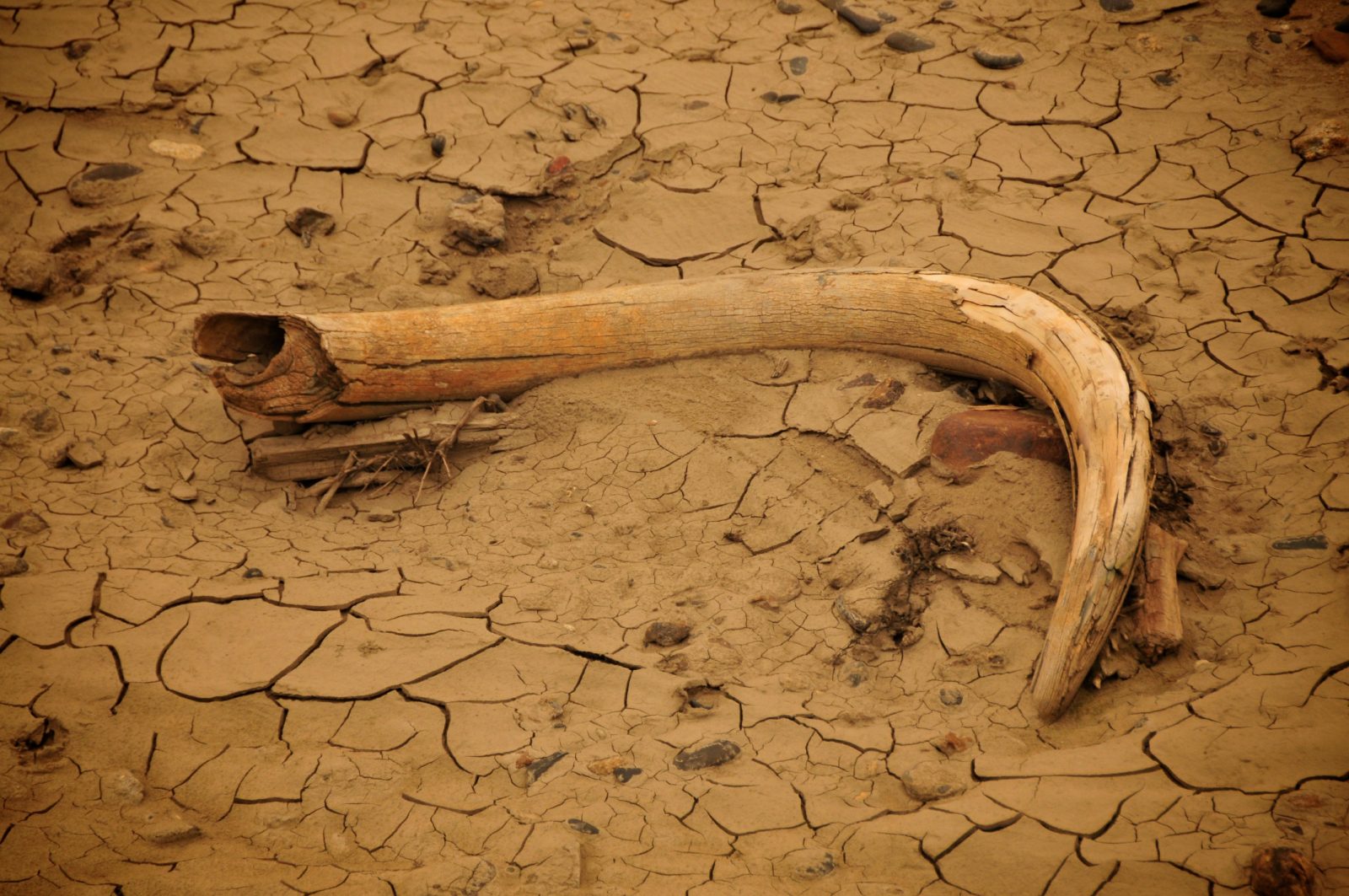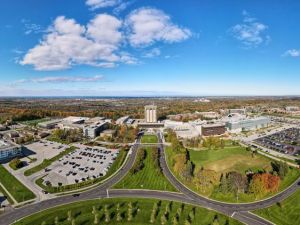 A woolly mammoth bone discovered by Brock University professor Kevin Turner during his research in Old Crow Flats, Yukon.
A woolly mammoth bone discovered by Brock University professor Kevin Turner during his research in Old Crow Flats, Yukon.Duck hunter Robert Kyikavichik’s discovery of a woolly mammoth bone sticking out of the Crow River in Northern Yukon may become a more frequent occurrence as warmer temperatures continue to weaken northern permafrost, says a Brock University hydrologist.
Kevin Turner, assistant professor in Brock’s Department of Geography, studies the impact of climate change in a lake-rich area of the Yukon called Old Crow Flats, the traditional territory of the Vuntut Gwitchin First Nation.
He notes that in Northern Canada, increasing temperatures and fluctuating precipitation are more pronounced than other parts of the country.
This has caused some lakes to shrink, others to expand, and river shorelines to erode.
“The permafrost holds everything together and shoreline erosion allows for it to slide into the river, unlocking whatever has been stored within it. Increasing temperatures in the Canadian north can weaken the permafrost and lead to more erosion,” says Turner.
In fact, Turner himself found a woolly mammoth bone a few years ago during his research in Old Crow Flats.
“It is a regular occurrence for members of the Vuntut Gwitchin First Nation, whose traditional territory this is, to find newly exposed bones along the river bank. This region (Beringia) has been a refuge for animals for many thousands of years and the evidence has not been cleared away by glaciers.”
Turner is now studying how climate change-induced landscape changes in Old Crow Flats are affecting the area’s water balance and chemistry.
He is particularly interested in the movement of carbon, a chemical element that, when bonded with oxygen, produces carbon dioxide.
Humans’ massive burning of oil, coal and other fossil fuels has greatly increased the amount of carbon dioxide in the atmosphere, which is warming the earth’s temperature.
“It is important to identify the movement of carbon from other sources, including degrading permafrost,” he says. “As carbon-rich material is unlocked from the frozen shorelines and exported into the river system, the dissolved carbon can either remain within the waterways or become mobile in the atmosphere, which may perpetuate climate change.”








